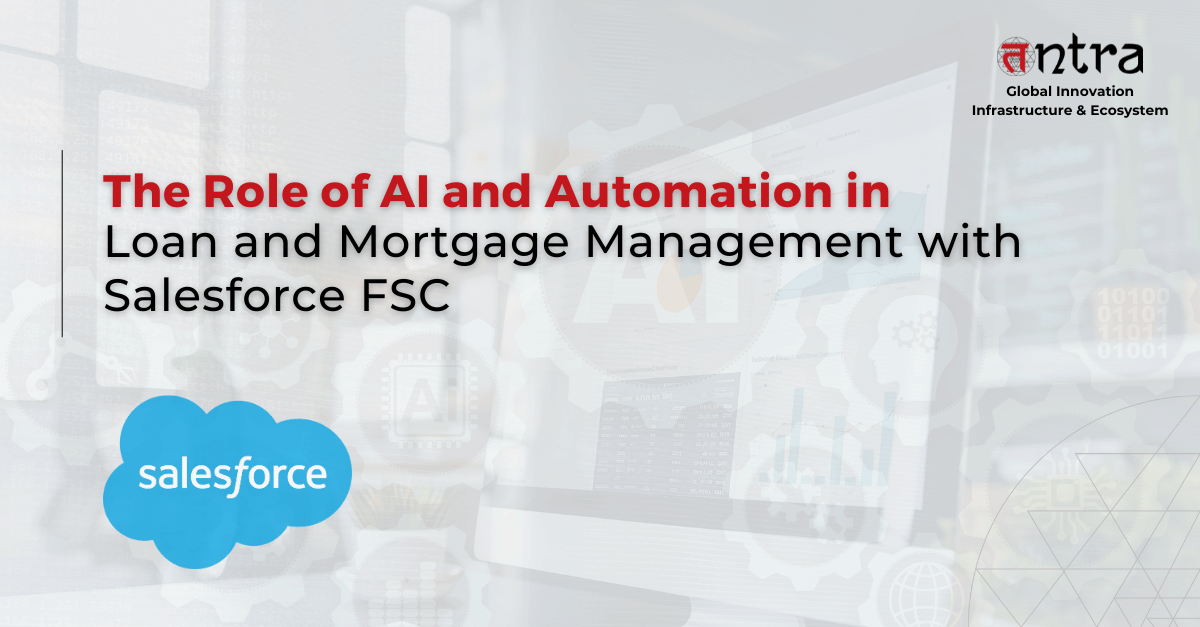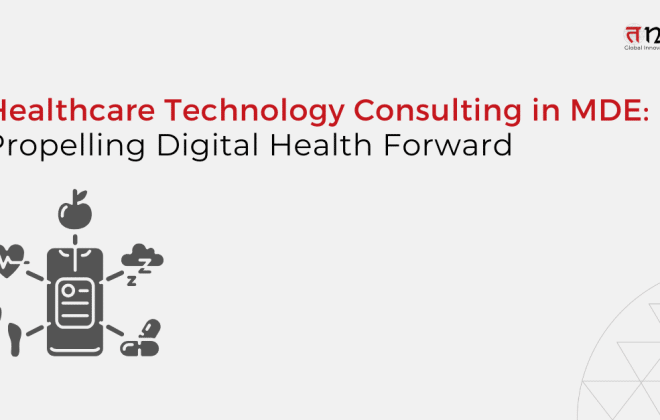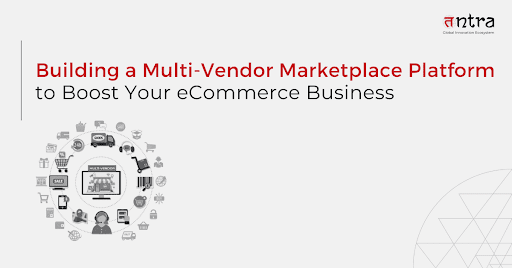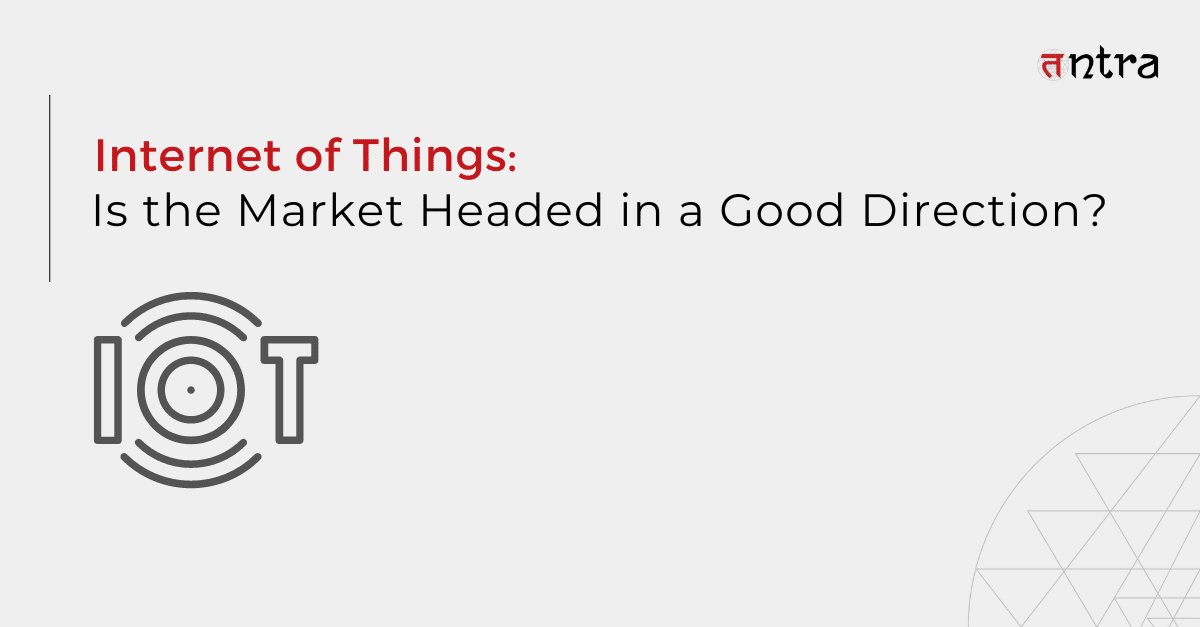
Internet of Things: Is the Market Headed in a Good Direction?
Table of Contents
ToggleCoca-Cola connected its vending machines to the Internet in 1982. The Internet of Things enables the company to attract clients by offering personalized customer service.
Coca-Cola uses IoT technology solution to collect customer data like where people buy the most, popular products, vending machine inventory, profitable products, and more. It uses AirWatch, SAP, and Salesforce for customer data evaluation and analytics.
With the help of the Internet of Things, Coca-Cola created a new promotion program. It allows customers to earn reward points and exchange them for a free drink. On top of that, over 100,000 vending machines now accept mobile payments. They also send a reminder to the customer to purchase a drink when they send the word “wallet” to the number 2653.
(Source: Medium)
The Growth Trajectory of the Internet of Things
Spending on Enterprise Internet of Things (IoT) grew 22.4% in 2021 to $158 billion. Companies heavily invest in IoT products to create connected systems and deliver personalized products and services.
The IoT market size will grow to $525 billion from 2022 to 2027, with a CAGR of 22%. The demand for IoT systems is high as enterprises deploy smarter ways to optimize operations and service their customers.
Smart devices, sensors, and robots are expected to improve their technical implementation. As a result, Industry 4.0 will utilize robotization and IoT platforms as a part of its day-to-day operations. Since IoT systems are easy to train and minimize human risk, manufacturing companies are the most significant users of such solutions.
With COVID-19, there came a dramatic increase in the utilization of the Internet of Things. Cloud-based patient monitoring software by players like General Electric fueled the growth of the IoT market. This made it a mainstream technology.
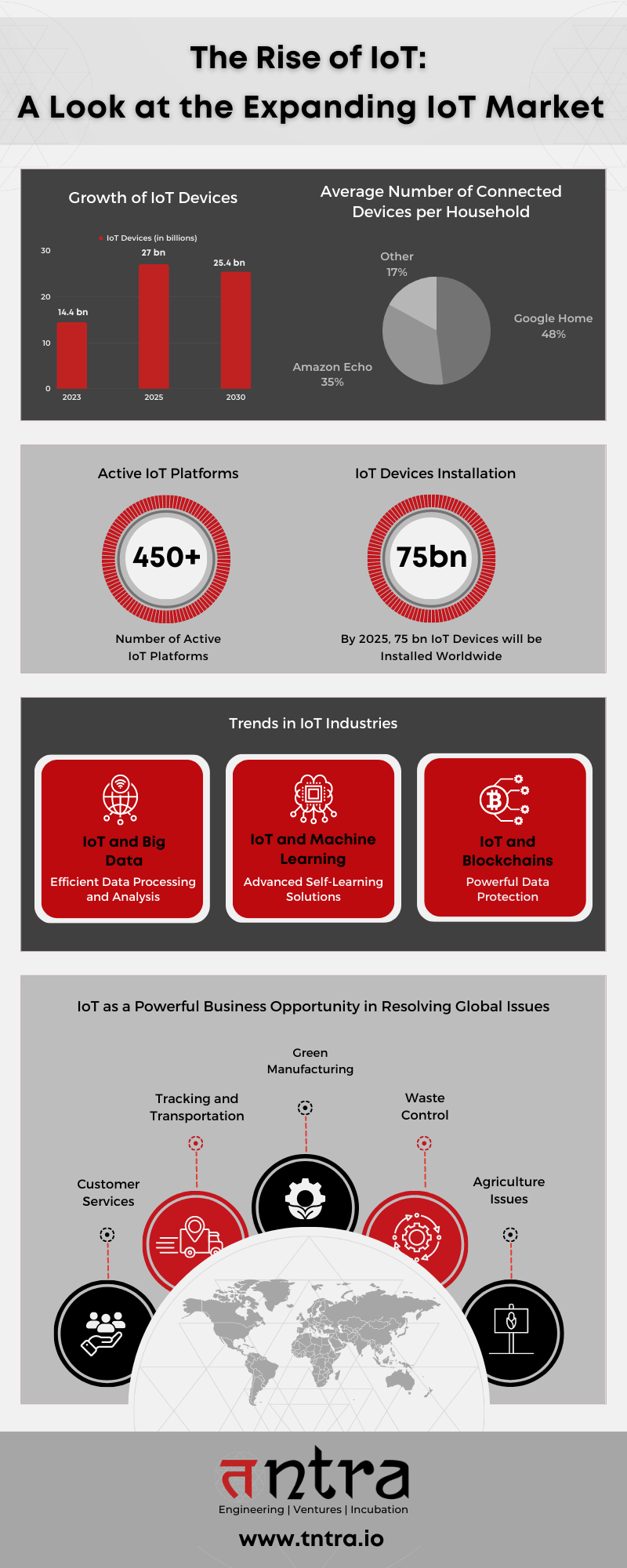
Read more: Python for Modern Enterprises: Is it Feasible for IoT Solutions?
Internet of Things: Is it Connecting us with the Future?
Spending on Enterprise Internet of Things (IoT) grew 22.4% in 2021 to $158 billion. Companies heavily invest in IoT products to create connected systems and deliver personalized products and services.
The IoT market size will grow to $525 billion from 2022 to 2027, with a CAGR of 22%. The demand for IoT systems is high as enterprises deploy smarter ways to optimize operations and service their customers.
Smart devices, sensors, and robots are expected to improve their technical implementation. As a result, Industry 4.0 will utilize robotization and IoT platforms as a part of its day-to-day operations. Since IoT systems are easy to train and minimize human risk, manufacturing companies are the most significant users of such solutions.
With COVID-19, there came a dramatic increase in the utilization of the Internet of Things. Cloud-based patient monitoring software by players like General Electric fueled the growth of the IoT market. This made it a mainstream technology.
What does the future of the Internet of Things look like? Here are a couple of implementations that will be worth noticing –
- Smart Cities – As more and more cities become smart and work with interconnected systems, IoT implementation reaches a bigger scale than ever before. From something as simple as electric bicycles to travel in the city to an underground subway network, all will be connected.
- Smart Wearable – Today, smart wearable are not just limited to smartwatches. The future looks good for compact IoT devices like smart rings, earbuds, and electric chips, which are already making their way into the market.
- Industrial Applications – Google, Oracle, Cisco, and IBM are a couple of giants that already use IoT on an enterprise level. With companies becoming more connected, IoT-based systems will drive better optimization for all industries.
Conclusion
With cloud computing, big data, and Artificial Intelligence taking center stage, IoT adoption is definitely going to rise. However, there are certain challenges of hardware and software interoperability that companies still face. But overcoming them and creating an interconnected ecosystem (same as Apple) will deliver unexpected results.
Creating an interconnected ecosystem, however, requires experts from a software product engineering company like Tntra. Because you want to build a system that ensures complete enterprise and consumer connectivity, we suggest you consult with our engineers and IoT experts, who will help you in making the right decision. Consult us today for FREE!
